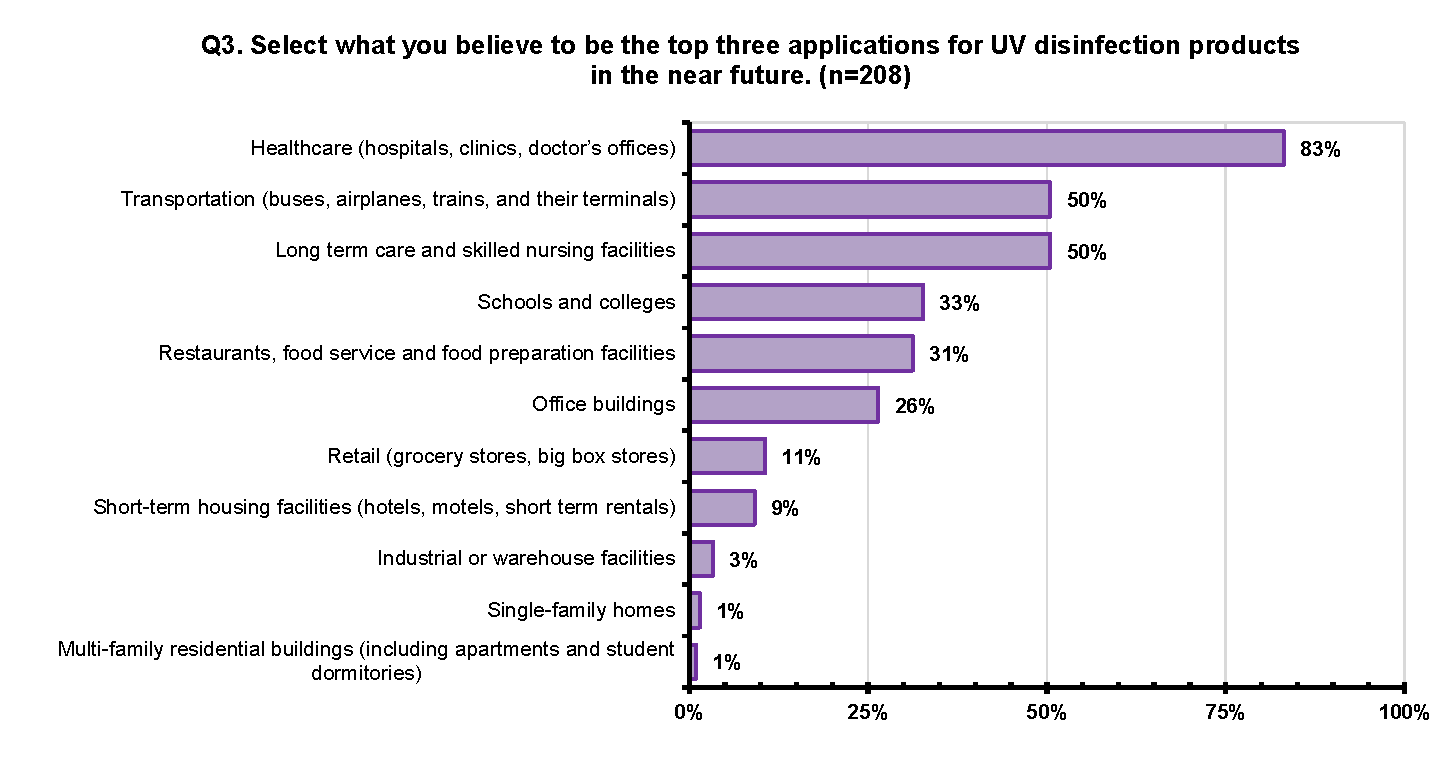Lighting Research Center (LRC) conducted a survey to investigate the viewpoint of people towards UV disinfection products.

(Image: Pixabay)
Demands for UV disinfection products hiked due to the present pandemic crisis. With increasing options for products and applications, many consumers and product specifiers have questions about the safety, effectiveness, and energy efficiency of these products.
In order to address these concerns, the LRC is currently examining a range of UV disinfection technologies. The goal of this work is to provide information that will help decision makers select UV products that are effective, safe, and energy efficient. To launch the project, the LRC administered an online survey asking about people's experiences with and concerns about UV disinfection products. Responses to the survey were received from over 200 people in June and July 2020 with respondents mostly serving in the lighting industry (38% lighting designer or specifier, 28% lighting manufacturers, lighting manufacturer’s distributors or representative 9%) and other energy professionals and educators.
In the survey, respondents indicated what they believe to be the three most promising types of UV disinfection products. The most popular product is upper-room air purification, chosen by 58% of the respondents, following in-duct air purification (55%), surface disinfection integrated with light fixtures (45%), and surface disinfection from (dedicated) wall- or ceiling-mounted products (40%).
Other options includes portable UV whole-room disinfection products, enclosed UV disinfection boxes, chambers or cabinets, mobile UV disinfection robots, hand-held UV disinfection products and portable UV integrated air purifiers.

(Image: LRC)
Survey respondents also marked the three most promising application types for UV disinfection. Most respondents (83%) selected healthcare applications. Half (50%) thought that transportation and long-term care (i.e., nursing home) facilities were a promising application for UV disinfection systems. Less than a third of respondents selected schools and colleges (33%), restaurant food service (31%), and office buildings (26%) among their top three rated application types.

(Image: LRC)
Finally, respondents were asked to select the three greatest concerns they had with UV disinfection technologies. 81% of the respondent were concerned about product safety. Also of concern were field verification of effectiveness (62%) and overall effectiveness of UV products (53%). A third of respondents were concerned about damage to materials (33%) and the lack of clear building safety codes for use of UV disinfection in buildings (31%). Of lesser concern were ongoing maintenance (17%), high product cost (14%), and energy use (9%).














